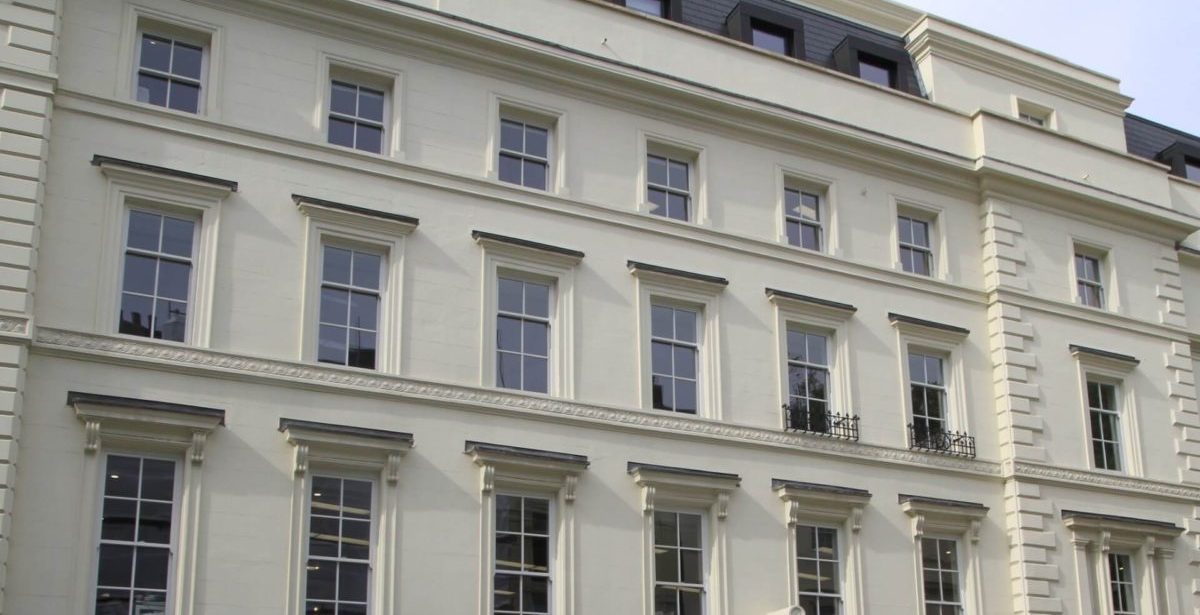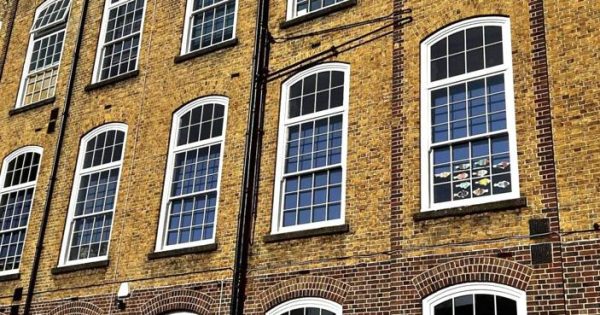Mon Apr 7
Urban heritage properties, often located in busy city centres or conservation areas, face increasing challenges when it comes to noise pollution. The need for effective acoustic soundproofing has become more pressing, particularly in period buildings with traditional sash windows, as noise levels from traffic, construction, and bustling urban environments grow.
With noise intrusion being a significant concern for those looking to maintain the integrity of their property while ensuring comfort, sash window soundproofing presents an ideal solution for architects and specifiers working on high-value urban restoration projects.
In this technical guide, we explore the options for soundproofing sash windows, focusing on methods that maintain the aesthetic integrity of these historical features while dramatically improving noise reduction.
Why is sash window soundproofing important for heritage properties?
Sash window soundproofing is crucial for heritage properties in urban areas where noise pollution is common. By implementing effective solutions, architects can ensure comfort for occupants while preserving the property’s historical integrity and their aesthetic choices. This approach reduces noise intrusion, creating a quieter, more pleasant living environment.
The challenges of noise pollution in heritage properties
The amount of noise intrusion can vary significantly depending on the location of the property, the age and condition of the current windows, and the surrounding environment. For example, a property on a busy road will experience a higher level of noise pollution than one located in a quieter, residential area. This is why noise reduction is becoming an increasing priority in heritage building restoration, requiring solutions that preserve the aesthetics of the window frames while providing a dramatic difference in soundproofing performance.
Sash window soundproofing: The best solutions for heritage buildings
When considering sash window soundproofing for period properties, there are several methods that provide different levels of noise reduction. Each method also takes into account different logistical factors, such as energy efficiency, visual appeal, and ease of installation.
Secondary glazing for sash windows
Secondary glazing is one of the most popular methods for improving soundproofing in heritage properties, as it offers significant noise reduction without affecting the original design of the window. This involves installing an additional pane of glass inside the existing sash window frame, creating an insulating air gap between the two. The effectiveness of secondary glazing in reducing noise levels depends on factors such as the type of glass used and the size of the gap between the panes.
One of the key advantages of secondary glazing is that it provides a high level of noise reduction while maintaining the original timber sash windows and preserving the historical character of the property.
Acoustic glazing and soundproof sash windows
Acoustic glazing is a highly effective option for soundproofing sash windows. It utilises specially designed glass that has been engineered to reduce sound wave transmission. Acoustic glass is often laminated or constructed with multiple layers to absorb and dissipate sound energy. By fitting acoustic glazing into the existing sash window frame, you can achieve a dramatic reduction in the amount of noise entering the property, even in areas exposed to high traffic noise or severe levels of noise pollution.
Double glazing: A versatile noise reduction solution
Double glazing is one of the most widely used solutions for improving both thermal and acoustic performance. By fitting two panes of glass within the sash window frame, double glazing can reduce the level of noise entering the property by up to 50% when compared to single glazing. This is particularly effective in areas with moderate noise pollution, as the air gap between the glass panes acts as an insulator against sound waves.
For heritage properties, double-glazed timber sash windows can be a suitable option when retrofitting older windows. TRC Contracts offers a range of double-glazed sash windows, including traditional timber options that preserve the character of the building while delivering modern performance.
Triple glazing: Premium soundproofing for ultimate noise reduction
Triple glazing offers an even higher level of noise reduction compared to double glazing, making it a superior option for properties exposed to severe noise pollution. By incorporating three layers of glass, triple glazing effectively reduces sound transmission by up to 75%, compared to the 50% noise reduction of double glazing. This makes it particularly suitable for properties located in areas with high traffic, construction noise, or other sources of constant disruption.
TRC Contracts offers triple-glazed sash windows that maintain the aesthetic integrity of traditional timber sash designs while offering advanced soundproofing and thermal efficiency. The advanced glazing technology, paired with the natural insulation of the hardwood timber frames, ensures both noise reduction and energy efficiency in urban heritage properties.
Vacuum glazing: Advanced soundproofing for modern heritage restoration
Vacuum glazing is a relatively new innovation in window technology, offering both superb thermal and acoustic performance. Vacuum-glazed windows work by creating a vacuum between two panes of glass, eliminating the need for a gas-filled air gap. This results in an ultra-thin, highly efficient window with outstanding noise reduction properties.
For urban heritage properties, vacuum glazing offers a high-performance solution for both energy efficiency and soundproofing, without the bulk or thickness of traditional double or triple glazing. This can be an ideal choice when dealing with more demanding noise levels, as the vacuum construction significantly reduces sound transmission.
At TRC Contracts, we offer vacuum-glazed timber windows that can be custom-fitted to your heritage property, ensuring maximum noise reduction while retaining the character of the original design.
Achieving the best results for sash window soundproofing
Sash window soundproofing is a vital consideration for architects and specifiers working on heritage restoration projects. Whether retrofitting existing sash windows or installing new sash windows, solutions such as secondary glazing, acoustic glass, double glazing, triple glazing and vacuum glazing offer significant improvements in noise reduction while preserving the property’s aesthetic.
Our team of acoustic specialists is available to provide useful information and guide you through the design process to find the best method of installation for your specific requirements. With our expertise in traditional timber windows, we can help you achieve the ideal balance between noise reduction, energy efficiency, and aesthetic integrity.
For more information or to discuss your project in detail, contact our customer service team today. We’re here to help you choose the best option for your building’s soundproofing needs.
Discover more with TRC Contracts
Choosing the right window style for your architectural design
Advancements in window restoration techniques
The benefits of triple glazed sash windows in historic buildings





